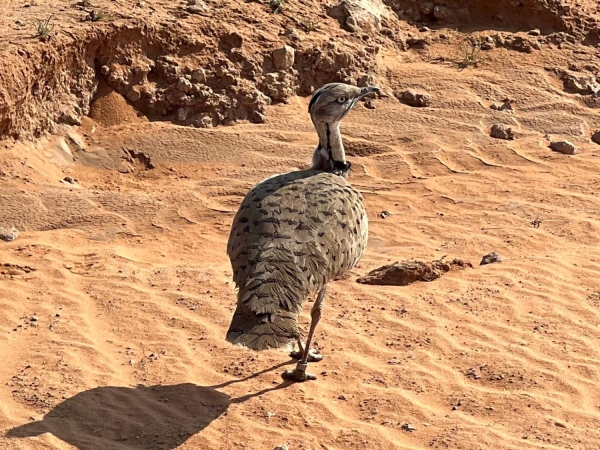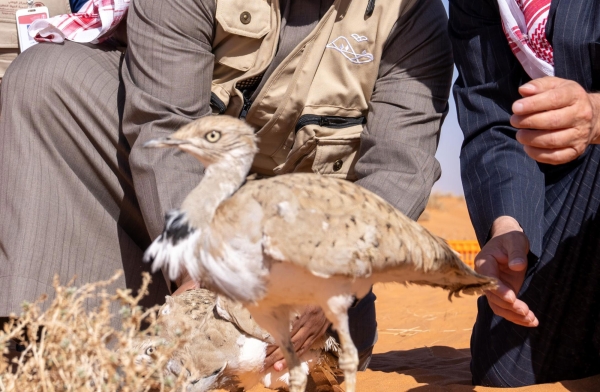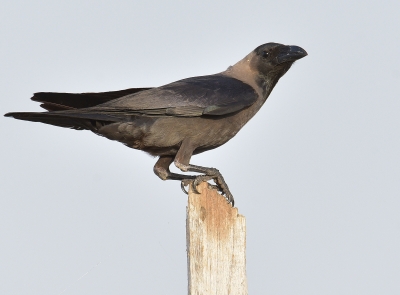


The Arabian Bustard (scientific name: Ardeotis arabs) is a bird belonging to the bustard family. A population of this species inhabits the coastal Tihamah region in the southwestern part of the Kingdom of Saudi Arabia. It is an extremely rare breeding resident, or possibly extinct. Its breeding has not been documented, although the possibility remains. It is active on Farasan Islands, part of Jazan Province, where an Arabian bustard was spotted in 2017 for the first time since 1990.
Protection status of the Arabian Bustard in Saudi Arabia
The Arabian Bustard was commonly observed in the early twentieth century in the Kingdom. However, with habitat loss, overhunting, and egg collection, the number of females declined sharply. It was recorded at twelve sites in a survey conducted between 1987 and 1990. Later, only a single Arabian bustard was documented in Farasan Islands in 2017, indicating it may have become extinct in the Kingdom.
The Kingdom exerts efforts to prevent the extinction of bustards: Imam Abdulaziz Bin Mohammed Royal Reserve Development Authority released groups of bustards within that reserve, as well as in King Khaled Royal Reserve, in cooperation with the National Center for Wildlife, as part of the stages of reintroducing endangered wildlife into their natural habitats, increasing their numbers, developing them, and preserving them.
Life of the Arabian Bustard
This bird inhabits rocky plateaus and small valleys with acacia trees and grasses, such as those found in the coastal Tihamah Plain. It may also be found in cornfields. It lives solitary and measures between seventy-five cm and one hundred cm in size. Sexual dimorphism in weight is evident, with males ranging from 5,700 g to ten thousand g, and females weighing approximately 4,500 g.
Its diet consists of a variety of invertebrates, such as locusts, grasshoppers, beetles, small reptiles, rodents, and nesting birds. It feeds on these prey items on or near the ground.
The Arabian Bustard is active during twilight and daylight, and partly at night, spending two-thirds of its day searching for food, especially in the early morning and before sunset. It grazes in open fields at night.
Its nest is a shallow, unlined depression in the ground, and the female incubates one or two eggs for up to twenty-five days.
Related quizzes
Related articles


